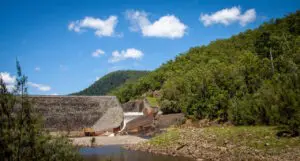Gas will only ever play a supporting role in Australia’s transitioning electricity system, and Scott Morrison’s threat to build a new gas generator in New South Wales is an unnecessary and ‘heavy-handed’ intervention, according to new research from the Grattan Institute.
The new research published by the think tank this weeks looks at the challenges of how to manage the looming replacement of Australia’s substantial ageing fleet of coal-fired generation.
It makes clear that more gas will not be the answer. Instead, it will be solar and wind generation that will replace Australia’s coal generators, most of which will reach the end of their operational life over the next couple of decades, and the higher cost of gas means that it will only ever play a supporting role, and will not serve a more substantial role as a ‘transition fuel’.
“In power generation, the large-scale use of gas as a ‘transition fuel’ – supplying ‘baseload power’ with lower emissions than coal – does not stack up economically or environmentally,” the report says.
“Gas has been declining as a share of Australia’s power supply since about 2014, and the best estimates indicate this decline will continue over the coming decade. Gas will play an important backstop role in power generation when the sun isn’t shining, and the wind isn’t blowing – but this role does not require large volumes of gas.”
To illustrate that point, AGL has announced the biggest big battery in Australia – at least in storage terms – with a 250MW/1000MWh facility to be built at Torrens Island, replacing an ageing large gas generator that will shut down. Fast start generators have also been installed at the plant, but they will be rarely used.
The Grattan Institute also challenged an argument from those advocating for growing Australia’s gas industry, that increasing supplies of gas have led to lower electricity prices. The Grattan Institute says that the recent falls in the market share of gas suggest that it, too, was being pushed out of the market by cheaper renewables.
Over the first nine months of 2020, gas generation experienced the largest relative fall in market share, as falling electricity demand and increasing market share from solar and wind has pushed fossil fuel generation out of the National Electricity Market.
Over the year to the end of September, gas generation fell by 16.7 per cent, compared to the year prior. Generation from black coal also fell by 6.8 per cent over the same period. Meanwhile, solar increased a massive 27.0 per cent, and wind generation grew 14.8 per cent.

of 2019 and the same period in 2020
“If gas generators were indeed the key factor driving prices down, they would do so by bidding at lower prices in the market and so increasing their share of power supply. Other generators would respond to this competition by reducing their prices to moderate their own loss of market share,” the report says.
“But it is extremely unlikely that the response by other generators would be large enough to wipe out and reverse the initial shift to gas. But gas generation is actually losing market share. Across the NEM gas generation fell by about 17 per cent in the first nine months of 2020 compared to the same period in 2019.”
Dispatchable gas generation is playing a key role in helping to balance variations in the supply of solar and wind generation and will continue to do so until lower-cost energy storage technologies can provide grid support at a similar scale.
However, the Grattan Institute said that the Morrison government’s threat to use government-owned Snowy Hydro to build a new gas fired generator in New South Wales was a ‘heavy handed’ push to force more gas generation into the system.
Morrison has said the government could intervene and build a new gas generator if the private sector doesn’t build sufficient new generation capacity to fill a supply gap left by the closure of Liddell coal-fired power station.
However, the Grattan Institute argued that gas generation did not merit such a forceful intervention, but that the whole energy market would be better served by clear signals on the expected closure of Australia’s coal generation fleet.
The Grattan Institute’s energy program director, Tony Wood, said that the federal government should accept the fact that gas will only play a bit part in Australia’s energy system, with demand for gas falling in both the electricity system, as well as from the mains gas network.
“The evidence is clear: gas is in decline, economically and environmentally,” Wood said. “Rather than indulging in wishful thinking or living in denial, the Federal Government and the gas industry – and its customers – should start planning now for a future without natural gas, or at least with a dramatically reduced role for natural gas.”









